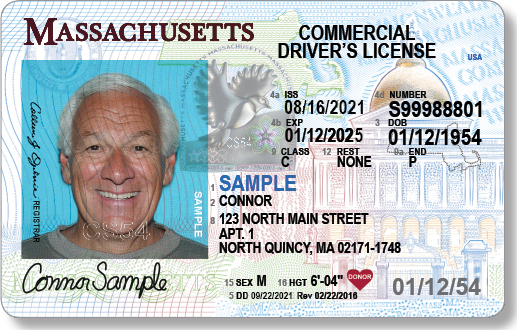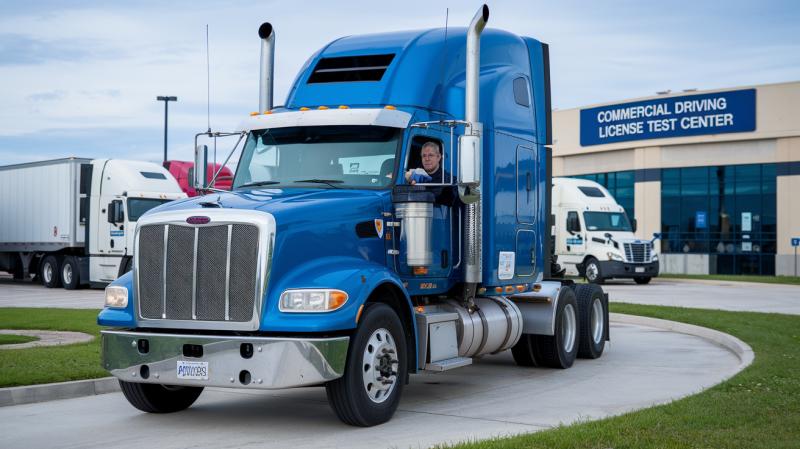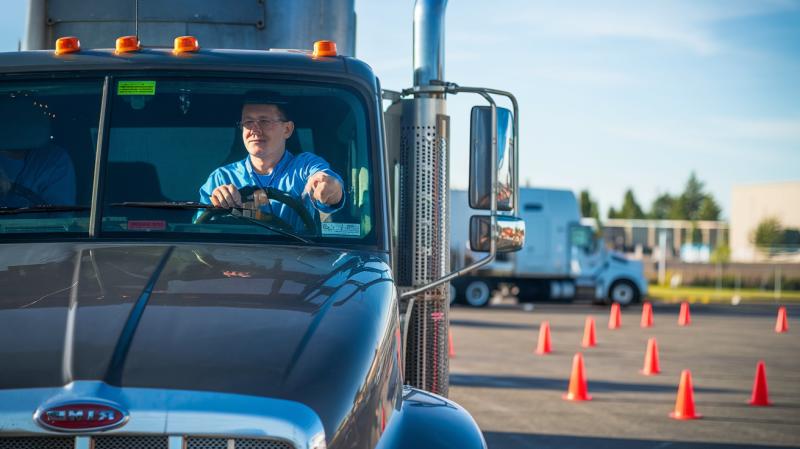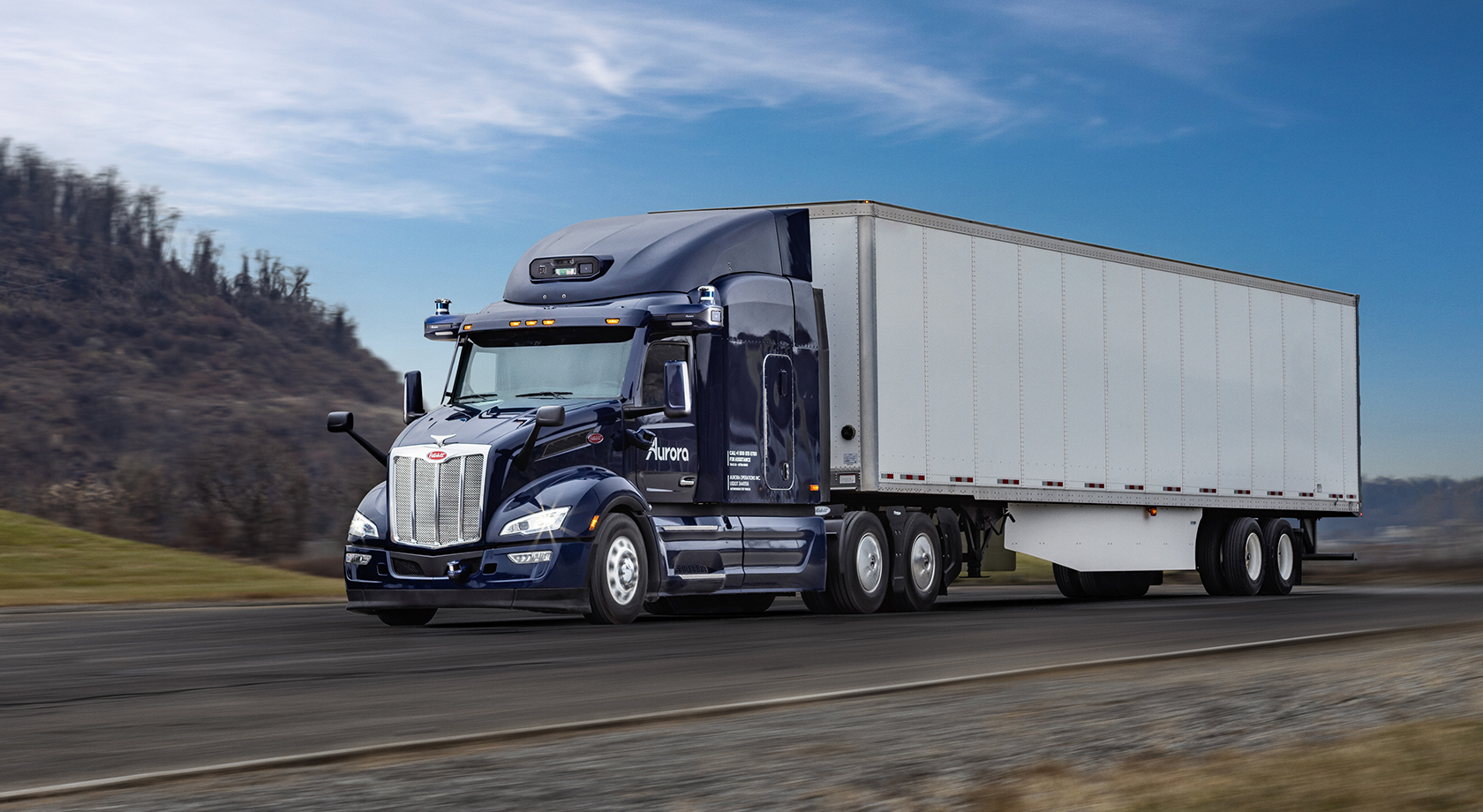
America's trucking industry faces a paradox: new CDL holders can't find jobs due to lack of experience, while carriers struggle with driver shortages of 80,000+ nationwide.

Drivetech Partners
America's trucking industry faces a concerning paradox: while CDL schools continue producing qualified drivers, they struggle to find employment due to a critical experience gap. Most carriers require 1-2 years of on-road experience from new hires, creating a bottleneck where technically qualified drivers remain sidelined despite an industry-wide driver shortage of 80,000 that threatens to double by 2030, which amplifies the opportunity for autonomous self-driving truck systems.
Key Takeaways
The trucking industry hauls 72.6% of America's freight by weight, yet faces a worsening driver shortage despite producing thousands of new CDL holders annually
New drivers face a critical catch-22 situation: they can't get hired without experience but can't gain experience without being hired
Many new drivers leave the industry within the first 120 days due to lack of mentorship and job dissatisfaction
Structured mentorship programs and zero-experience partnerships between carriers and CDL schools show promise in bridging the experience gap
Addressing this disconnect could unlock untapped workforce potential and help stabilize America's supply chain long-term
The Critical State of America's Trucking Industry
The numbers tell a compelling story about trucking's vital role in our economy. The industry hauls 72.6% of the nation's freight by weight and generates nearly $987 billion in revenue annually. Despite 3.54 million truck drivers currently employed across America, the industry faces a persistent shortage that threatens the stability of our supply chain.
This shortage—estimated at 80,000 drivers in 2022—is projected to worsen dramatically, potentially reaching 160,000 drivers by 2030. The Bureau of Labor Statistics projects job growth of 5% for heavy and tractor-trailer truck drivers from 2023 to 2033, with approximately 240,300 openings projected annually due to retirements and industry expansion.
The financial attraction exists—median annual wages for heavy and tractor-trailer truck drivers stand at $57,440 as of May 2024, with starting salaries in some entry programs ranging between $50,000–$70,000. Yet despite these potentially lucrative opportunities, the industry continues to struggle with finding and retaining qualified drivers.

The Paradox: Plenty of Licenses, Not Enough Experience
The heart of the problem lies in a widening disconnect between CDL training and actual job placement. CDL schools continue to produce new drivers steadily, with average tuition costs of $4,200-$4,950. Individual CDL schools can produce over 200 new drivers annually, creating a steady stream of technically qualified drivers.
Yet these newly licensed drivers face a significant hurdle: the "experience gap." Most carriers require at least two years' experience, creating a catch-22 situation where new drivers can't get hired without experience but can't gain experience without being hired. Within just a 50-mile radius of Bentonville, AR, approximately 700 driver jobs remained unfilled, highlighting the mismatch between available drivers and available positions.
The situation has worsened as larger carriers have significantly reduced or paused recruitment visits and training partnerships with CDL schools. Many CDL training programs focus primarily on license attainment rather than developing the real-world skills needed for independent long-haul work. This misalignment leads to many new drivers exiting the industry within the first 120 days due to job dissatisfaction or lack of mentorship.
Economic Impact of the Experience Gap
This disconnect creates a critical bottleneck in the supply chain with far-reaching economic consequences. The supply of newly trained drivers far outpaces the availability of viable entry-level positions. Churn rates among new drivers in the first 120 days are described as "immense and significant," creating costly turnover for carriers and frustration for drivers.
New drivers frequently remain under- or unemployed despite technical qualification, wasting valuable human resources at a time when the industry desperately needs them. Carriers tightening hiring amid freight sector slowdowns and economic headwinds further exacerbates the problem, creating a vicious cycle.
This bottleneck affects more than just the trucking industry—it creates workforce instability and inefficiency across the entire supply chain. The shortage impacts almost every sector of the economy reliant on trucking for goods movement, from retail to manufacturing to healthcare.
Solutions: Bridging the Experience Gap

Addressing this critical disconnect requires a multifaceted approach focused on creating pathways from CDL acquisition to gainful employment. Enhanced mentorship programs and structured apprenticeships are proving critical for bridging the license-to-job transition. Community colleges in several states are developing six-week, 180-hour accredited CDL training programs that focus not just on licensing but on job readiness.
Integration of simulated, real-world driving experience in training programs shows positive results in preparing drivers for actual road conditions. Programs offering direct transition from classroom to truck cab with job placement assistance help eliminate the gap between training and employment.
The key components of successful solutions include:
Stronger partnerships between carriers and CDL schools to develop reliable talent pipelines
Flexible, regionally tailored job placement approaches that match graduates with local opportunities
Ongoing professional development to support new drivers, reducing early-career attrition
Targeted programs for military veterans and formerly incarcerated individuals to expand the qualified workforce
The Business Case for Investment in New Driver Development
The long-term stability of the trucking industry depends on resolving the experience gap bottleneck. Companies investing in new driver mentorship programs report improved retention metrics, with some seeing turnover reductions of 20% or more. These lower turnover rates translate directly to reduced hiring and training costs over time.
Properly supported new drivers become loyal employees and industry ambassadors, creating a positive cycle of recruitment and retention. Financial assistance programs for CDL training show positive return on investment when paired with retention initiatives, making them financially sustainable for carriers.
Forward-thinking carriers can realize competitive advantages through stronger training partnerships, positioning themselves as employers of choice in a tight labor market. Industry-wide collaboration can address systemic issues more effectively than individual company efforts, raising standards across the sector.
Pilot Programs Showing Promise
Several innovative approaches are already demonstrating success in bridging the experience gap. Some companies are pioneering "zero experience required" programs with extended mentorship periods, pairing new drivers with experienced mentors for several months of on-the-job training.
Apprenticeship programs receiving federal funding show early success in retention, with some reporting 85% of graduates still with the company after one year. Technology integration through simulators and telematics data is helping accelerate experience acquisition, allowing new drivers to practice challenging scenarios safely before encountering them on the road.
Other promising approaches include:
Graduated responsibility models allowing new drivers to build skills progressively
Regional short-haul opportunities creating experience-building stepping stones to long-haul careers
Public-private partnerships developing standardized mentorship models that can be widely adopted
Case studies showing impressive retention improvements in programs that bridge the experience gap
Creating a Sustainable Trucking Workforce for the Future
The experience gap represents both a significant challenge and an opportunity for industry transformation. Addressing this gap can unlock untapped workforce potential, helping to stabilize America's supply chain for the long term. The industry needs to move toward integrating training with immediate job placement as the standard approach rather than the exception.
Changing carrier mindsets about training investment versus recruitment costs is essential—viewing driver development as a strategic investment rather than just an expense. The industry would benefit from developing industry-wide standards for mentorship and training, creating consistency across different companies and regions.
Creating clear career pathways that make trucking more attractive as a long-term profession can help with both recruitment and retention. Establishing metrics to measure success of experience gap reduction initiatives will allow for continuous improvement and adaptation.
By bridging the CDL experience gap, the trucking industry can address its persistent driver shortage, improve workforce stability, and ensure the continued efficient movement of goods across America—strengthening the entire supply chain in the process.
Sources
Talk Business & Politics - Area CDL training demand remains robust amid freight recession
Bureau of Labor Statistics - Heavy and Tractor-trailer Truck Drivers
Transport Topics - Community Colleges in Four States Enhance CDL Training
Routeready - The Growing Demand for Truck Drivers and How CDL Training Helps Fill the Gap
CDL Jobs - Truck Drivers in the United States: Employment and Haul Statistics





